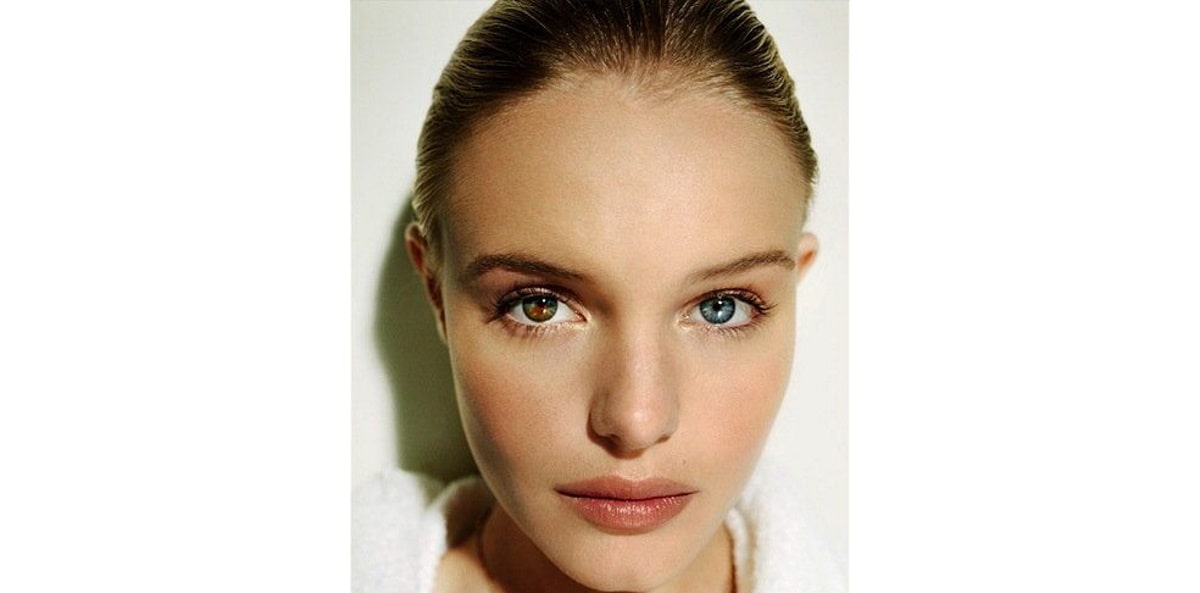Heterochromia: Why Do Some People Have Different Colored Eyes?
Ever seen someone with two different colored eyes? Is it fake? Are your eyes tricking you?
Nope, it’s the weird and wonderful condition known as heterochromia.
People with heterochromia have been the focus of fascination for centuries. That’s why so many end up celebrities, despite how rare it is. Less than 1% of the world’s population have heterochromia and it can appear in multiple ways.
In this article, we’ll dive into all of the questions you may have. Let’s debunk this wild phenomenon!
3 fun fast facts about heterochromia
- Infants can be born with heterochromia or it can develop within a few weeks of birth as melanin changes occur. Sometimes it can take up to 3 years for a child’s eye color to fully settle.
- Most cases of heterochromia are benign and genetic. However, it can happen due to eye diseases and injuries in rare cases.
- Heterochromia is said to be more common in animals than in humans. Dogs and cats often have different colored eyes for genetic reasons. There could be an element of selective breeding as heterochromia is more common in domesticated animals than in wild animals.
Why do some people have two different colored eyes?
You’ll be pleased to know that most cases of heterochromia are benign and present at birth. Even if the heterochromia appears later, it’s not necessarily a sign of severe untreatable illness.
Let’s break down why a person’s eyes may be two different colors.
1. They were born with heterochromia
Heterochromia present at birth is called “congenital heterochromia” – fancy right? Though “present at birth” is a bit of a misnomer. It can take some time to present in infants but it’ll be an expression of genetic abnormality. Your eye color is inherited from your parents. This determines how much melanin is in your iris. But sometimes the genes passed down can have slight mutations which cause heterochromia.
If the affected eye is lighter than the other, it’s called hyperchromic. If the affected eye is darker than the other, it’s labeled hypochromic.
2. They develop heterochromia from injury or illness
So some people have it at birth. An even rarer subsect of people develop heterochromia because of an eye disease or illness within the body. The technical term is “acquired heterochromia”.
Here are some common ailments that can cause acquired heterochromia:
- GlaucomaFluid builds up around your iris and cornea, which can fade the color of your eye. It’s most common in adults over 70 and is treated using eye drops or surgery. If you are developing glaucoma, you may also notice blurred vision, headaches and pain around the eyes.
- Eye injuriesInjuring your eye can cause a whole host of abnormalities in your eye’s appearance including color changes. It can also enlarge your pupils which makes one eye appear darker.
- CancerMelanomas can develop as brown spots in the eye. This is because damaged cells in the eye are overproducing melanin.
- Horner’s syndromeThis is a condition that affects the nerves controlling the face and eye muscles. Some people are born with it but acquired Horner’s syndrome can also cause heterochromia.
3. It’s a cosmetic choice
With the advent of safe colored contact lenses, people have been experimenting with their eye colors for decades. In the early 2000s, it was a fashion trend to have two different colored eyes by use of contact lenses. This is perfectly safe to do if you use them correctly.
How can you know if you have heterochromia?
It’s quite simple to identify heterochromia. Parents will notice the color difference in their baby’s eyes at birth or shortly after birth if the condition is congenital.
If your eyes are changing color because of an eye disease, you’ll notice a color change in one of your eyes. It can be a progressive change like glaucoma when fluid builds up slowly on the iris. Or it could be a sudden change like a melanoma spot that appears overnight.
It can be tricky if the color change is slight. For example, one blue eye and one green eye can appear the same color in some photographs due to lighting. You’ll only notice the difference when the light hits your eyes in a particular way. Likewise, hazel eyes could be green eyes with central heterochromia – also known as a ring of fire – around the iris. You’ll only be able to tell in certain lighting.
If you’re unsure, get a second and/or professional opinion.
The 3 main types of eye heterochromia
- Complete heterochromiaThis is when one eye is a completely different color from the other. Common examples are one blue eye and one green eye, or one blue eye and one brown eye.
- Central heterochromiaAs the name suggests, the difference in pigment is concentrated in the center of the iris. This results in a ring of a different color in one or both eyes. Central heterochromia often presents as a brown ring in the eye, making eyes appear hazel.
- Segmental heterochromiaThis is when only a section of the iris is a different color. Usually, it’s a brown splash in green or blue eyes. You can also see segmental heterochromia that appears like a perfectly halved iris divided by contrasting colors.
How rare is it to have two different colored eyes?
It’s difficult to put perfect stats on heterochromia because sometimes the difference in color is barely noticeable. A left eye might be ever so slightly more blue than the other mostly green eye, even though they are both extremely light eyes. Technically, that could be classed as heterochromia but very few people would notice.
Research suggests that fewer than 200,000 people in the whole United States have heterochromia. On a world stage, World Atlas suggests that heterochromia presents in less than 1% of the population.
That said, you wouldn’t know it by looking at A-list celebrities! Considering how rare heterochromia is, there are many Hollywood celebrities with central, segmental or complete heterochromia. Speaking of which…
3 celebrities with heterochromia
Let’s look at some famous people with heterochromia to see the different ways it can look.
We’ve chosen a selection of segmental heterochromia and complete heterochromia havers to give you the full picture.
1. Kate Bosworth
Actress Kate Bosworth is the perfect example of segmental heterochromia in full force. She has a brown splash in her left eye that is recognizably hers. As with the other celebrities on this list, she has had heterochromia since birth.
2. Elizabeth Berkley
Elizabeth Berkley, of Saved by the Bell and Showgirls fame, also has segmental heterochromia. However, instead of a splash like Kate, Elizabeth’s right eye is half green, half brown. Her left eye is fully green.
3. Dan Akroyd
Beloved comedic actor Dan Akroyd has complete heterochromia with one brown eye and one blue eye.
When to see an eye doctor about heterochromia
Congenital heterochromia is usually harmless. If your baby’s eyes have changed colors, consult an ophthalmologist as soon as possible to rule out any eye diseases. Babies developing heterochromia due to the natural pigmentation process over several weeks or months is normal.
If you’ve acquired heterochromia suddenly, it’s definitely worth seeing a doctor to rule out any eye diseases. If you catch any abnormalities early, you can increase your chances of treating them quickly.
Curious what other unusual colors are out there? Check out our deep-dive on the rarest eye colors!

Written by:
Olivia De Santos













